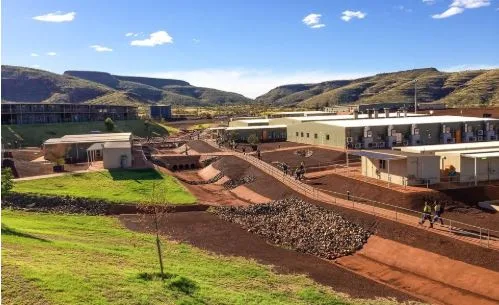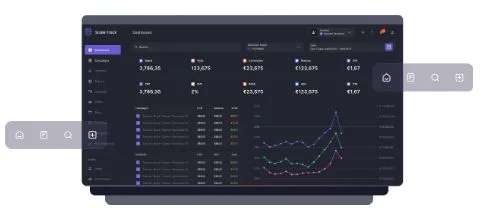A Day in the Life of a FIFO Worker: What to Expect on Camp
For many people, the idea of working in remote locations across Australia might sound daunting. Yet for Fly-In Fly-Out (FIFO) workers, it’s a lifestyle built on routine, resilience, and reward. FIFO camp jobs offer not just career growth and high earning potential, but also an experience unlike any traditional 9-to-5 role. Understanding what to expect at camp can help you decide whether this lifestyle aligns with your personal and professional goals.
Every day in the life of a FIFO worker is structured with precision. From early wake-up calls to the camaraderie at meal times and the job responsibilities that demand focus and efficiency, FIFO life is a world of its own. While the isolation and distance from home may seem like a downside to some, many workers find purpose in the stability, predictability, and community that these jobs provide. Let’s dive into a typical day on camp to explore the reality behind FIFO camp jobs.
Early Mornings and Preparation
The day for a FIFO worker often begins before the sun rises. Wake-up times can range from 4:00 AM to 5:00 AM depending on the site and shift schedule. A quick shower, a hearty breakfast at the mess hall, and workers are usually gearing up for their shift with safety briefings and the daily toolbox talk. These early hours require discipline, but they also offer a moment of calm before the intensity of the workday begins.
Preparation is not just about physical readiness. Mental sharpness is essential when you’re handling heavy machinery, navigating safety protocols, or tackling logistical tasks. Most workers maintain a strict routine to stay organized. Having personal protective equipment (PPE) in order, packing lunches from the canteen, and organizing gear ahead of time helps ensure a smooth start to the day. The emphasis on structure and safety creates a secure environment that allows FIFO workers to perform at their best.
Working the Day Shift
Once the workday begins, FIFO camp jobs can involve a wide variety of responsibilities depending on the role. From machine operators and electricians to cooks and cleaners, each worker plays a crucial part in keeping the operation running smoothly. Shifts typically run for 12 hours with a scheduled lunch and multiple short breaks. These long hours can be demanding, but they also mean more days off after the swing ends.
On-site work can be physically challenging, especially under extreme weather conditions. Whether in the blistering heat of Western Australia or the unpredictable conditions in remote Queensland, workers must stay hydrated and alert. While every role differs, the overarching focus remains the same: efficiency, safety, and teamwork. Many workers describe a strong sense of camaraderie that comes from sharing the same challenges and goals each day.
Meals and Social Interaction
One of the most consistent parts of FIFO life is the food. Meals are provided in the camp’s mess hall, often buffet-style, and include a wide variety of options to cater to different dietary needs. While not gourmet, meals are designed to be nutritious and filling, providing the fuel workers need to stay energized throughout their shifts. After long hours on the job, these meals become both a necessity and a source of comfort.
Beyond the food, meal times are also prime opportunities for social interaction. Workers from all departments gather to eat, unwind, and share stories from the day. These interactions help build a sense of community, combatting the isolation that can come with being away from home. For many, these moments are just as vital as the work itself, creating bonds that carry through the entire rotation.
After-Work Routine and Downtime
After a long day’s work, most FIFO workers return to their accommodation to rest and recharge. Camp facilities typically include air-conditioned rooms, shared or single occupancy depending on the site, with basic amenities like beds, desks, and televisions. Workers often use this time to shower, catch up on shows, video call family, or simply relax.
Some camps also provide recreational options like gyms, pool tables, and TV rooms to help workers unwind. These facilities are key to maintaining mental health and overall well-being. Managing downtime effectively is crucial in FIFO camp jobs, as it helps strike a balance between work and personal time even when living on-site. Having a structured post-shift routine allows workers to mentally disconnect from their tasks and prepare for the next day.
Staying Connected with Home
One of the most significant challenges in FIFO life is maintaining relationships back home. Being away for extended periods can take a toll on families and partners. Most modern camps provide reliable Wi-Fi, allowing workers to stay in touch via video calls, social media, or messaging apps. These connections are vital for emotional well-being and often form the emotional anchor for many FIFO workers.
Keeping in touch also requires intentionality. Many workers plan daily calls or send messages during breaks. While time differences and work schedules can make communication tricky, making the effort to stay connected helps ease the emotional distance. Over time, many families adapt to the rhythm of FIFO rotations, creating their own unique ways to stay close despite the miles apart.
Health, Safety, and Well-Being on Site
Health and safety are top priorities in any FIFO camp job. Workers undergo regular health checks and safety briefings, and most camps have on-site medical staff to handle any concerns. Mental health is also a growing focus, with resources like counselling, employee assistance programs, and wellness initiatives becoming increasingly available.
It’s no secret that working in remote, high-pressure environments can affect emotional and psychological health. As a result, companies are investing more in wellness programs, providing spaces for open conversations about mental well-being. Workers are encouraged to speak up, seek help when needed, and support one another. Maintaining health—both mental and physical—is a shared responsibility, and the culture around well-being is steadily improving across the industry.
The End of the Swing and Heading Home
The rotation cycle commonly known as a “swing” varies between companies, but a common pattern is two weeks on, one week off. As the swing comes to an end, there’s usually a mix of excitement and exhaustion. The final days on site are focused on wrap-up tasks, handovers, and preparing for the journey home. Workers pack up their rooms, hand back any equipment, and check flight rosters for the return trip.
Heading home is a rewarding moment. After weeks of intense work, being reunited with loved ones offers a deep sense of relief and joy. That time off isn’t just for rest—it’s a vital period to reset, enjoy personal life, and prepare for the next swing. The cyclical nature of FIFO camp jobs offers an unusual work-life balance: extended periods away from home followed by equally long stretches of quality personal time.
Why Many Choose FIFO Camp Jobs
Despite the challenges, many workers actively seek FIFO camp jobs because of the financial rewards, career development, and lifestyle flexibility. These roles often pay above-average wages and come with added benefits like accommodation, meals, and flights. For individuals willing to embrace the routine and make sacrifices, the return can be life-changing.
More than just a paycheck, FIFO work offers a unique opportunity to grow professionally and personally. Workers develop resilience, adaptability, and a strong work ethic. Many also form lifelong friendships and connections. For the right person, the FIFO lifestyle is more than a job; it’s a way to build a future, support a family, and enjoy well-earned time off in between. Whether you’re new to the industry or considering a switch, FIFO camp jobs can open the door to a truly dynamic career path.






